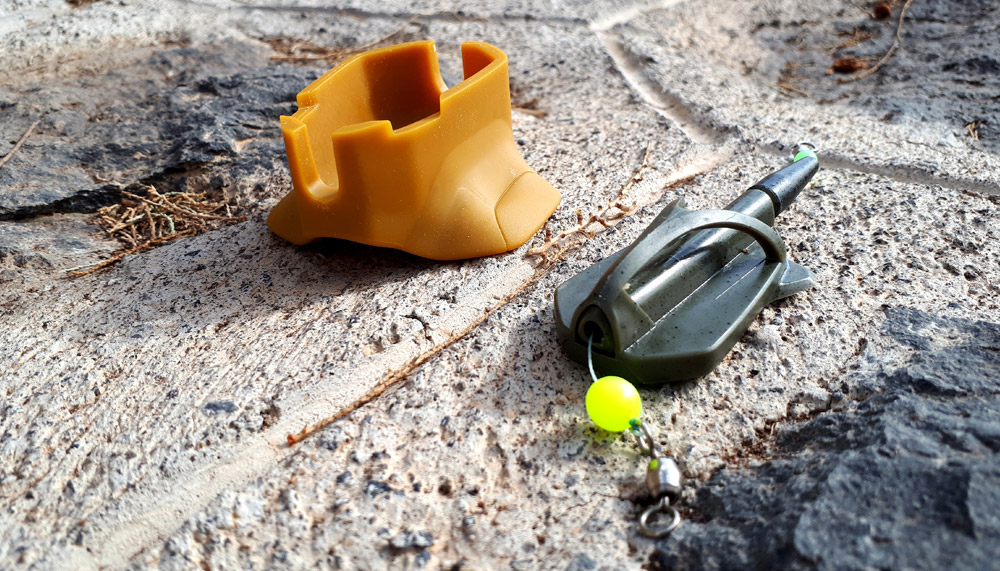
Introduction to Feeder Fishing: A Game-Changer for Anglers! 🎣
Ever heard of feeder fishing and wondered what the buzz is all about? Well, it’s time to dive deep into this fantastic fishing technique that’s reeling in enthusiasts worldwide.
What is Feeder Fishing? 🤔
In a nutshell, feeder fishing is a method where you use a ‘feeder’ to deliver bait directly into your fishing spot. This feeder releases bait slowly, attracting fish directly to your hook. It’s an efficient and strategic way to ensure you’re luring in your desired catch.
Essential Equipment and Tackle for Feeder Fishing 🎒
✅ Rod: Specifically designed for feeder fishing, these rods are typically longer and more robust to cast the feeder and handle the pull.
✅ Reel: A reel with a smooth drag system, tailored for long-distance casting.
✅ Line: A robust and durable line suitable for casting feeders and handling larger fish.
✅ Feeders: These come in various shapes and sizes, like open-end, block-end, and cage feeders. The type you choose depends on the fishing conditions and your target fish.
How to Fish Using Different Types of Feeders 🐟
☑️ Open-end Feeders: Ideal for rivers with strong currents. Fill them with bait; they release it steadily, luring fish to your spot.
☑️ Block-end Feeders: Best for still waters. They release bait slower than open-end feeders, perfect for wary fish.
☑️ Cage Feeders: Great for venues with bottom feeders. Fill them up with ground bait and let the aroma attract the fish.
Advantages of Feeder Fishing 🏆
🟫 Precision: Deliver bait right where you want it.
🟫 Efficiency: Steadily attract fish to your hook, increasing chances of a catch.
🟫 Versatility: Suitable for various water types and conditions.
How Feeder Fishing Stands Out from Standard Fishing 🌟
While traditional fishing depends heavily on casting accuracy and the movement of bait in water, feeder fishing offers a more targeted approach. By ensuring your bait is consistently in one spot and releasing its allure over time, you draw fish directly to you. It’s like having a secret weapon in your fishing arsenal! 🐠🏞️🎣
⭐ It is very important to know! Bottom fishing with a feeder is one of the most versatile ways to catch fish in the lake, sea and ocean. Soft food at the bottom of the reservoir is an effective way to catch fish, as it is less afraid, familiar environment, additional result – the smell from the bait (bread with cheese, flour with odorous additives, etc.).
Feeder Fishing: Unlocking the Secrets to a Bountiful Catch
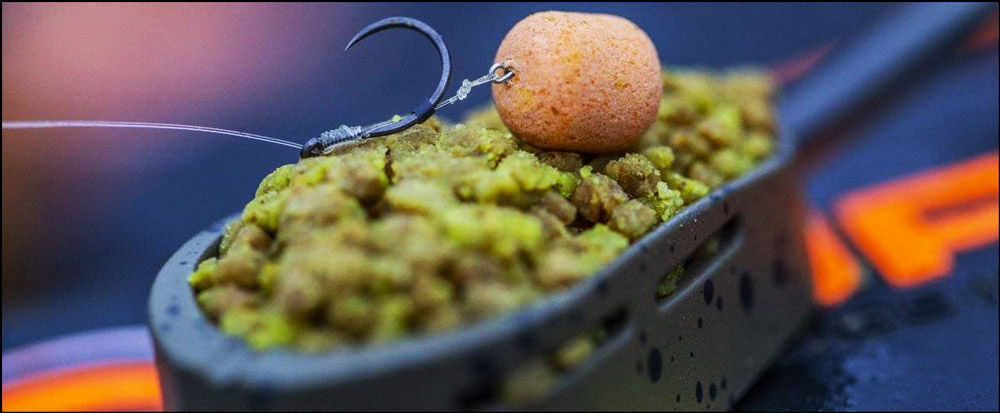
Feeder fishing, also known as legering, is a popular angling technique that uses a weighted feeder filled with bait, such as ground bait or pellets, to attract fish to the angler’s hook. This method allows for precise bait presentation and enables anglers to target specific areas where fish are feeding. The feeder gradually releases the bait into the water, creating a scent trail that lures fish to the vicinity of the hook.
Feeder fishing is a highly effective method that appeals to a wide range of fish species, from carp and bream to tench and barbel. This technique is versatile and can be used in various water conditions, including lakes, rivers, and canals. It is particularly useful for targeting bottom-feeding fish or when fishing at long distances or in deeper waters. Feeder fishing is an essential skill for any angler looking to increase their catch rate and broaden their angling knowledge.
Navigating the World of Feeder Fishing: Your Guide to Rigs and Tactics
This article aims to provide a comprehensive guide to the different types of feeder fishing rigs, their components, and the appropriate situations for their use. It will also cover essential tactics for bait selection, feeder placement, strike detection, and fish landing, allowing readers to develop a strong foundation in feeder fishing techniques.
By offering a detailed exploration of feeder fishing rigs and tactics, this article seeks to help both novice and experienced anglers improve their feeder fishing skills. The goal is to enable readers to approach feeder fishing with confidence, armed with the knowledge and techniques necessary for a successful and enjoyable angling experience.
Fishing in the ocean with a feeder is one of the most popular and successful methods of catching fish today. In this comprehensive guide, I would like to explain to you step by step what I think you need to know about feeder fishing.
🎡 Watch this video and it will become clear to you how to fish with a feeder and how to make a fishing tackle correctly:
🎡 Even if you are just starting out in fishing, you have probably already tried it out on a river or a lake. Fishing with a feeder in the ocean is quite difficult and different from quiet fishing in a lake, for example. Feeder fishing is different in many ways:
- Cast lures on 50-80 meters from the shore.
- It is necessary that the feeder has a weight of not less than 20 grams.
- To place the bait tightly enough inside to keep it in place when casting.
- The design of the feeder is open enough to feed the fish and to place small, strong hooks inside it.
- The ideal time to fish is at night. This time of day your fishing will be calmer and more successful as there will be no small trash fish and they will not be able to eat all of your food.
- Fish feed best on the bottom, so set your feeder there.
- You do not need to add a lot of additives to the bait. Most importantly, you should not add flour. You can add semolina, sunflower oil, any soft bread, milk as well as melted cheese.
- Your hooks should not be big, but they should be strong to bend. This way the fish can swallow them easily.
Feeder Fishing Rigs
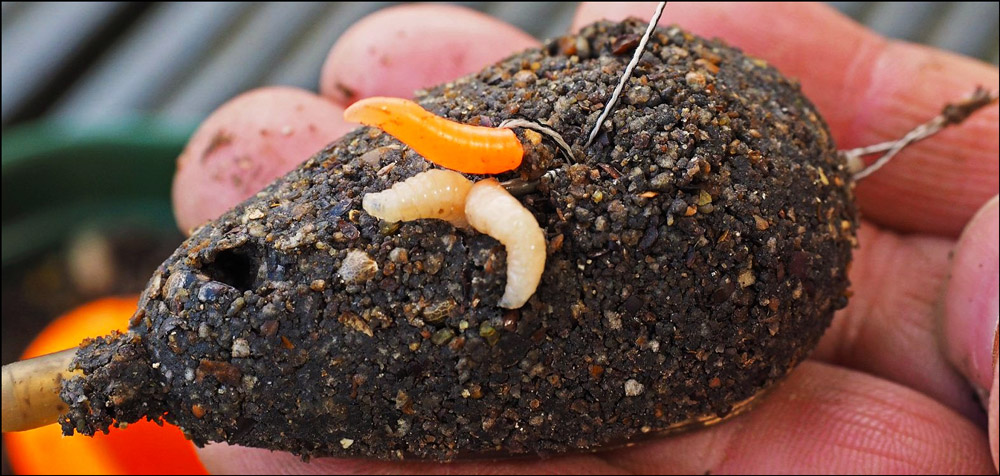
Choosing Your Weapon: A Guide to Essential Feeder Rigs
✨ Importance of choosing the right rig: Selecting the appropriate feeder rig is crucial for a successful feeder fishing experience. The right rig allows for precise bait presentation, maximizes bite detection, and improves your overall catch rate. Different rigs are designed to perform optimally in specific water conditions, and depths, and when targeting certain fish species.
✨ Types of feeder rigs: There are several types of feeder rigs used in feeder fishing, including the basic feeder rig, method feeder rig, helicopter feeder rig, and inline feeder rig. Each rig offers unique advantages and is best suited for specific angling situations.
The Classic Approach: Mastering the Basic Feeder Rig
🌟 Components and assembly: The basic feeder rig consists of a running ledger rig with a feeder attachment. This rig typically includes a mainline, a swivel, a feeder link or quick-change bead, a feeder, and a hook length. To assemble, attach the feeder link or bead to the mainline, followed by the swivel. Connect the hook length to the other end of the swivel, and attach the feeder to the feeder link or bead.
🌟 Suitable conditions and target species: The basic feeder rig is versatile and can be used in a variety of water conditions, and depths, and with different types of feeders. It is suitable for targeting a wide range of fish species, including carp, bream, tench, and barbel.
The Method to Success: Demystifying the Method Feeder Rig
💡 Components and assembly: The method feeder rig utilizes a method feeder, which is a specialized type of feeder designed to hold the bait more securely. This rig typically includes a mainline, a method feeder, a method connector or quick-change bead, and a hook length with a hair rig. To assemble, slide the method feeder onto the mainline, followed by the connector or bead. Tie the mainline to a swivel, and connect the hook length to the other end of the swivel.
💡 Suitable conditions and target species: The method feeder rig is ideal for situations where a more compact bait presentation is required or when fishing in flowing water. It is particularly effective when targeting carp and other species that feed near the bottom.
Taking Flight: Soaring with the Helicopter Feeder Rig
➰ Components and assembly: The helicopter feeder rig features a unique setup that allows the feeder to rotate freely around the mainline. This rig includes a mainline, a bead, a swivel with a feeder attachment, a second bead, a hook length, and a second swivel. To assemble, thread the mainline through the first bead, followed by the feeder swivel, and the second bead. Tie the mainline to the second swivel and connect the hook length to the other end.
➰ Suitable conditions and target species: The helicopter feeder rig is best suited for fishing in deep or weedy waters, as it minimizes the risk of tangles and snags. It is effective for targeting a variety of fish species, including carp, bream, and tench.
Streamlined Precision: The Inline Feeder Rig Unveiled
💥 Components and assembly: The inline feeder rig incorporates the feeder directly into the mainline, resulting in a streamlined and more discreet presentation. This rig consists of a mainline, an inline feeder, a quick-change bead or swivel, and a hook length. To assemble, thread the mainline through the inline feeder and tie it to the bead or swivel. Attach the hook length to the other end of the bead or swivel.
💥 Suitable conditions and target species: The inline feeder rig is ideal for situations where a low-profile bait presentation is needed, such as in clear or pressured waters. It is suitable for targeting various fish species, including carp, bream, and tench.
Feeder Rig Customization: Tailoring Your Tackle for Triumph
🧿 Factors to consider: When choosing a feeder rig, consider factors such as water conditions, depth, target species, and personal preferences. Think about the type of feeder that will be most effective for your chosen location and the behavior of the fish you’re targeting. Additionally, consider the type of bait you plan to use and the presentation you want to achieve.
🧿 Adjusting rigs for specific conditions: Customizing your feeder rig to suit specific angling conditions can improve your chances of success. For example, you can modify the hook length, use different feeder styles, or add weights to the rig to adjust for current speed or varying depths. Experimenting with different setups and making adjustments based on your observations and experiences will help you fine-tune your feeder fishing skills and increase your catch rate.
What is Feeder Fishing – The Basics
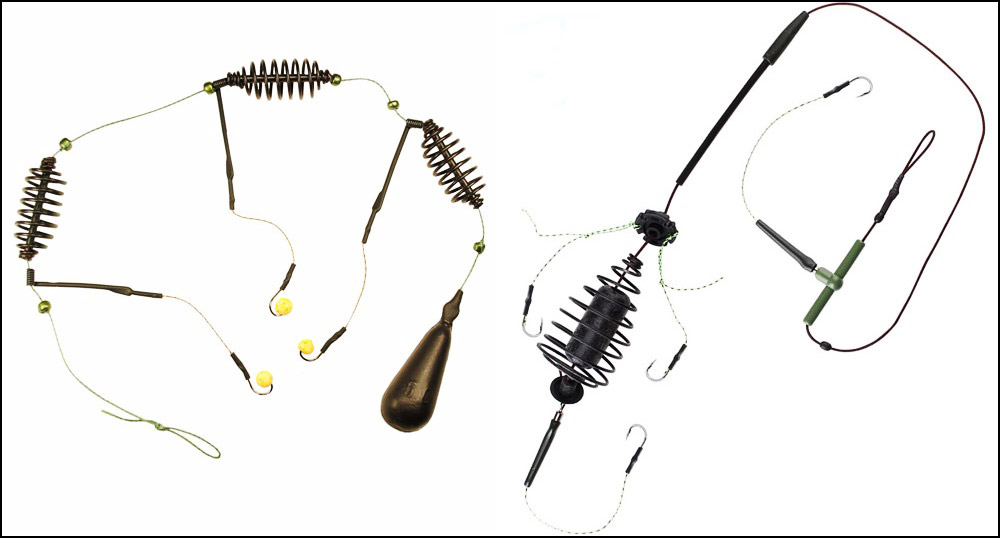
The feeder is a type of bottom tackle that was invented in England in the 1950s. The first anglers to use it lived near the River Severn. When the bottom tackle was developed, the main goal was to catch fish in deep water and away from the shoreline.
Feeder fishing is a type of bottom fishing, which uses a special rod and feeder. The main advantage is that the fisherman can cast a soft feed long-distance from the shore. Without a feeder, it is quite difficult to do this.
It is desirable to throw to the same chosen point, thereby concentrating a large amount of feed in one place on the bottom, and this, in turn, attracts a large number of fish.
How Do Fishing With A Method Feeder
The basic principle of feeder fishing is as simple as it is ingenious. It is a type of bottom tackle using a feeder. You continuously introduce small amounts of food into a very confined space via a feeder and thus attract the interest of the fish. The feeder attracts the fish by its smell and therefore the fish are eager to feed on the bottom.
Once you have set the feeders with bait, you can proceed directly to fishing. Of course, this is only a general outline. The feeder is versatile. In this method, as in any other direction of fishing, a lot of nuances and peculiarities. The secrets of feeder are learned from experience. If the food is inside the feeder, the fish swallows startle and jerks hooks. The fish are attracted to the bait and take the bait.
Principle Of Fishing With A Feeder
Prepare a sensitive rod, fishing rod stand, a feeder of a certain open design, 3 hooks. When fishing for peaceful fish, a very sensitive nibble indicator is needed – this task is performed by a thin feeder tip, which accurately indicates even the most cautious nibble.
Then take care of the soft bait. Place the bait firmly on the feeder and, most importantly, set the hooks inside with the stinger up. You need to cast at 70 meters. Throw exactly where the bait falls all the time. Pull the line tight and wait for the fish to grab the hook.
Take the hook at the moment when you get a bite. You can see it by the tip of your rod. Slowly pull the catch out. In the end, it’s best to pull the fish out of the water with a net. This is necessary because, from experience, the fish comes off at the last moment.
🎡 This is interesting! Learn To Feeder Fish – Useful video for you:
Types Of Fishing Feeder

For successful feeder fishing, you should carry a set of feeders, which should be suitable for the fishing conditions: fast, slow current, and standing water. The design of the feeder should be suitable in shape, weight, and capacity.
Therefore, when fishing on different water bodies, it is worth taking a set of different feeders. And if you also take into account that there will be occasional shoots and hooks, it is worth having even a few of the same ones in stock. So a solid stock of feeders is an important part of the equipment of both professional and novice anglers. So, what are the different constructions of feeders and how do they differ?
Method Feeder
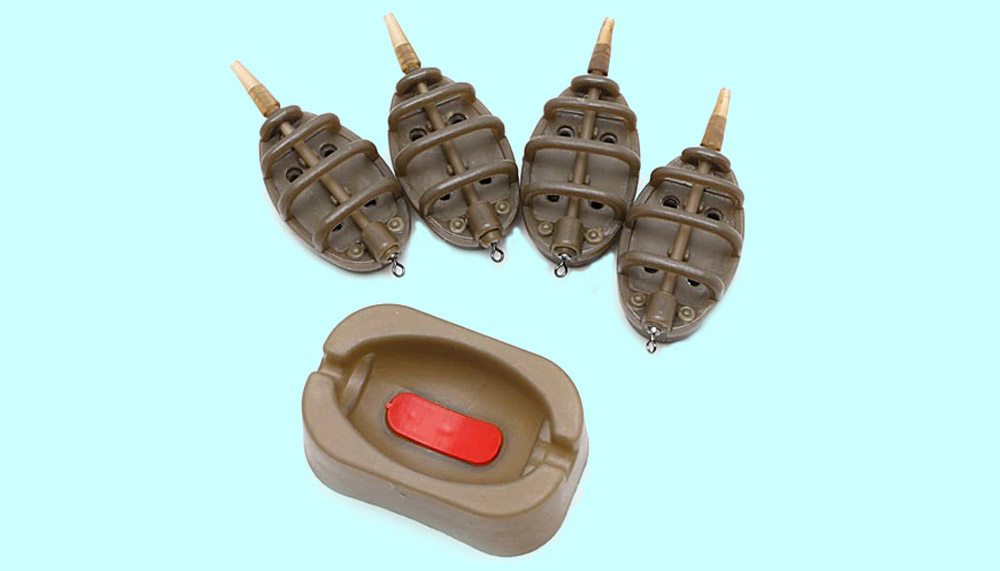
Feeders with a wide base, but not covered from above. They are usually used for large carp fish with large amounts of viscous bait. Or vice versa, for fast fishing with a very fast release of loose feed.
Cage Feeder
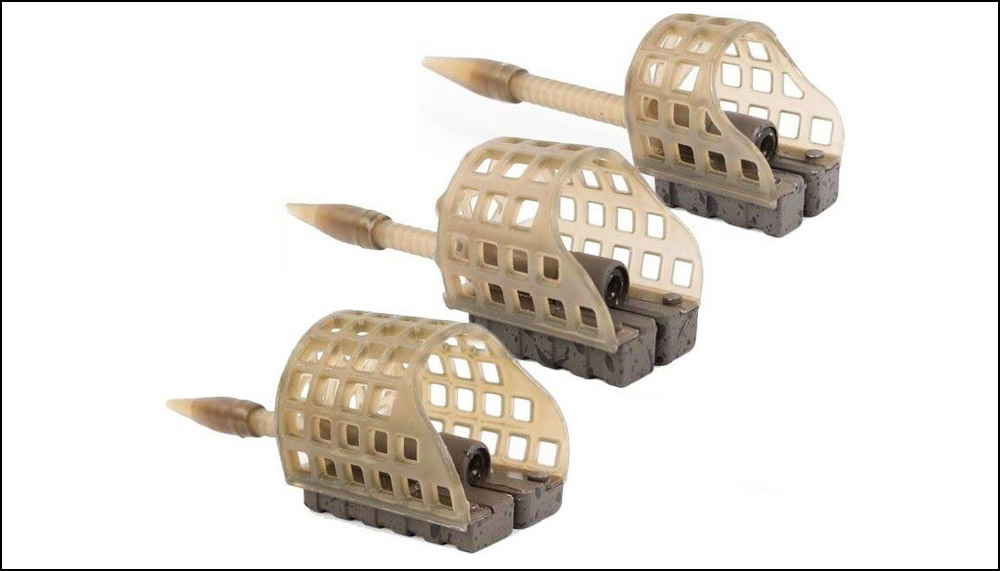
The bait comes out very quickly through its large holes. It is very suitable for preliminary, initial baiting, and creating a bait trail. For this purpose, it is sufficient to throw 5-10 filled feeders. Weights in combination with a strong feeder rod are suitable for in-stream fishing and lighter weights for standing water.
Speed Feeder
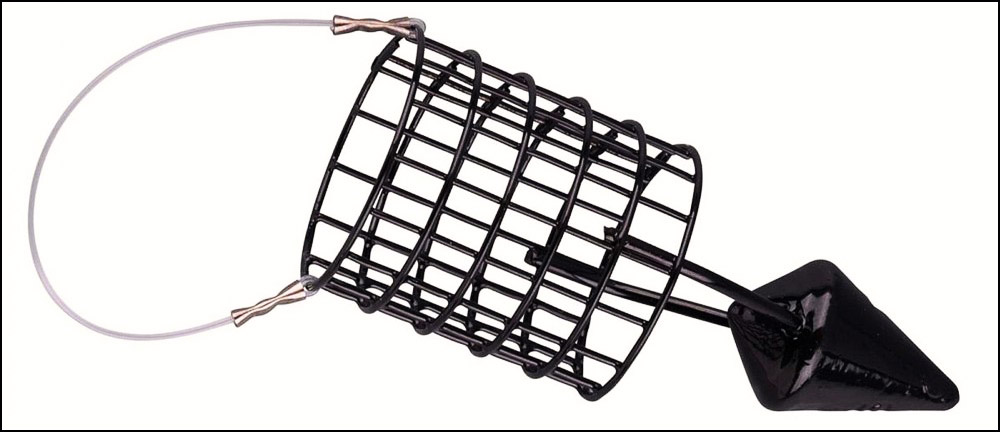
The centrally positioned leader allows very long reaches. It is used to reach depths beyond shallow inshore water, to fish on remote stretches. The farther the weight is away from the feeder, the better the bait is released.
Open Plastic Feeder
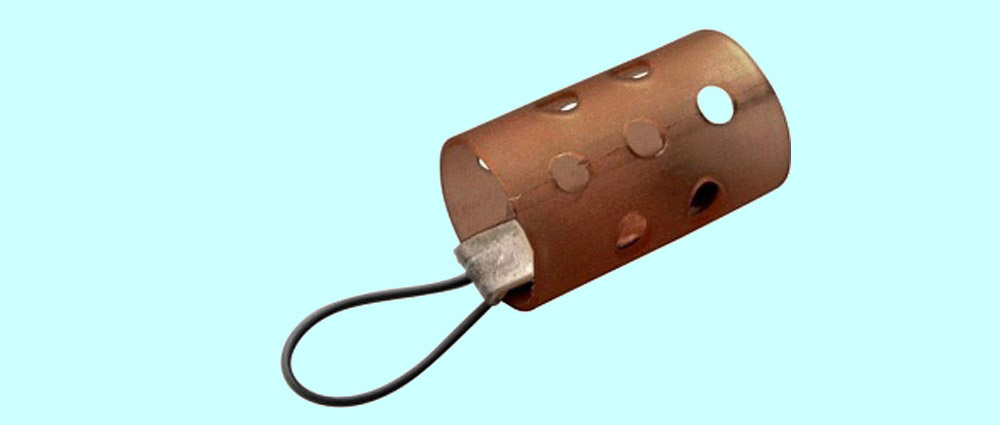
This is used when bait must be wicked away more slowly than a wire bait box. It is filled with gregarious bait or grain bait and sealed at the ends with damp bait plugs, which allow the contents to be released only gradually. If the bait is very viscous, give the feeder a short tug after sinking it.
Circular Net Feeder
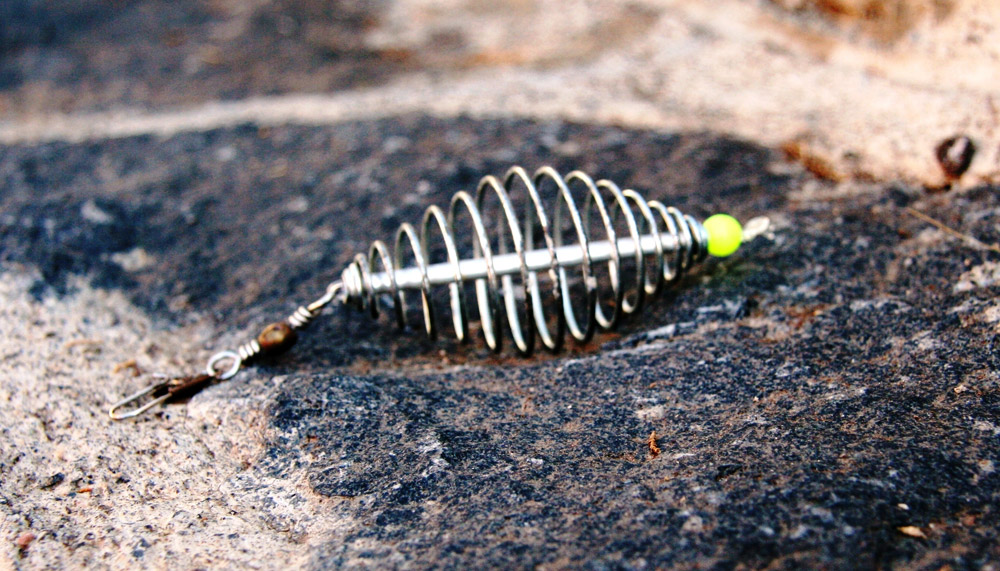
This is used in standing water and rivers with a slow current. It is suitable for pure mix or with a small proportion of animal feed.
Rectangular Wire Feeder
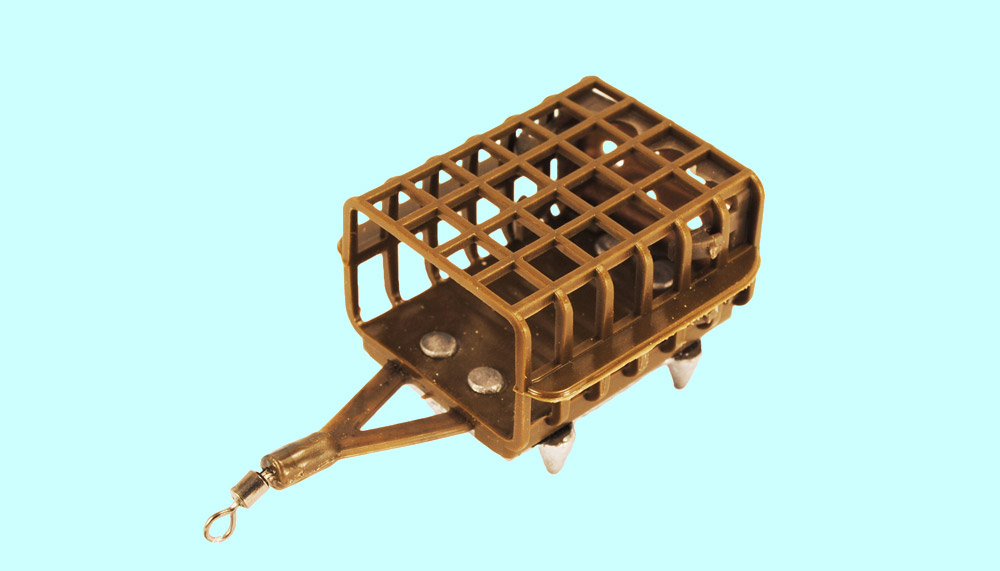
This is used for fishing in standing water and low current. Feeders are usually available with 5g weights in 5 to 25g intervals.
Closed Type Feeders
Closed-type feeders have a special plug on one side to slow down the washout of the bait. This type is usually used when using animal components in the bait, but if the bait is not sticky enough, a closed feeder is also a good idea.
Closed Type Oval Feeder
This is used for baiting with pure worms or a combination of base mix and worms in a swift current. By removing the end caps, it can also be used as an open feeder. A rigid connection to the main line prevents overlaps.
Round Bait Box
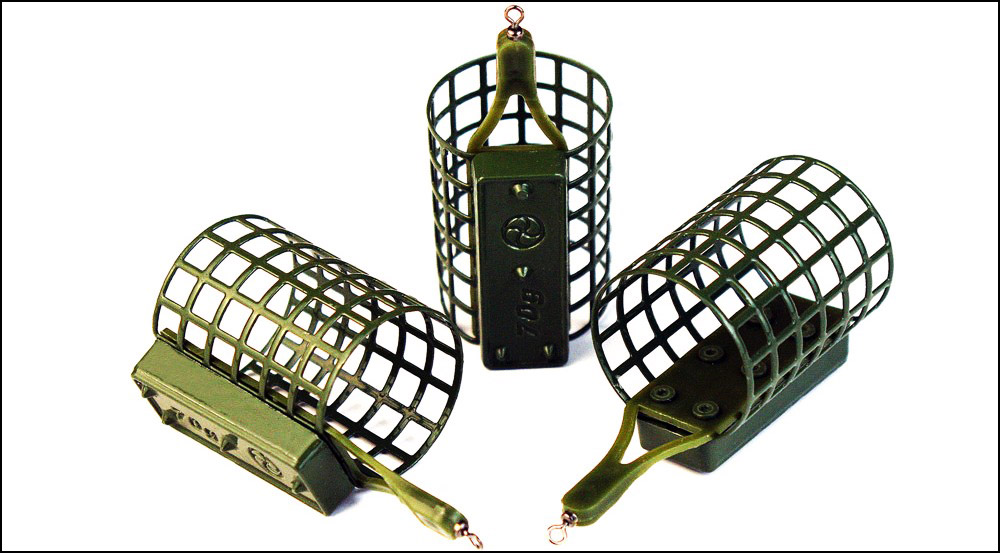
The lids on both ends can be removed for filling with large or small worms. Fitted on the mainline or the sideline. Loaded plastic bait box with swivel, swivel nut, and sinker on the connection. It is filled through the lid. Designed for moderate currents.
Distributor with Variable Loading
Easy to load thanks to the pellets attached at the lower end. Can also be used for light, responsive fishing. The removable covers are not lost as they are held in place by the line running through them.
Feeder Fishing Tactics
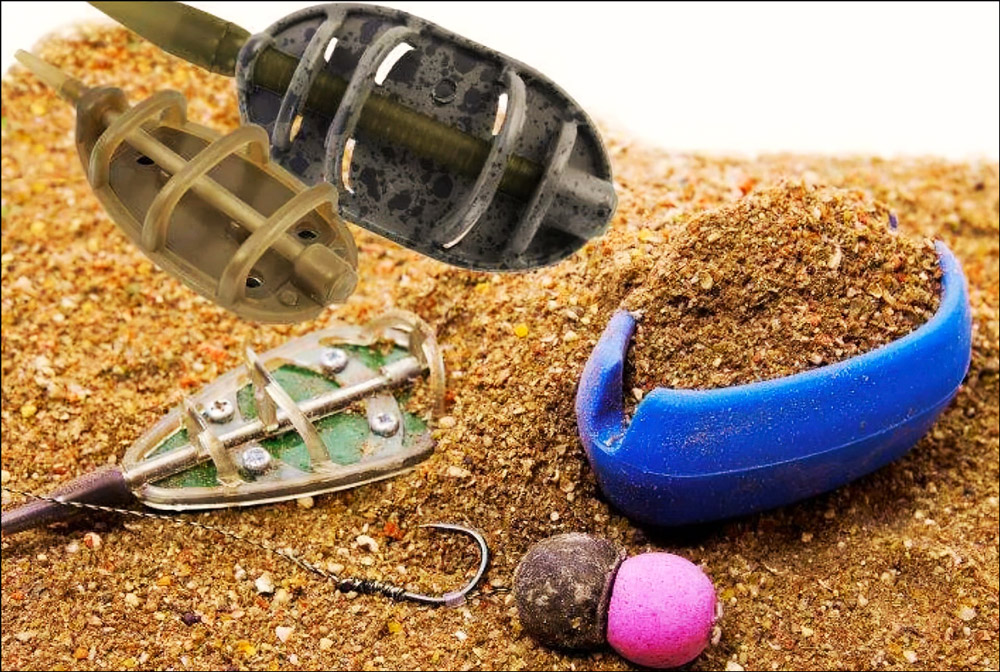
Selecting the Perfect Feeder: Your Key to Fishing Success
⌛ Types of feeders: Various types of feeders are used in feeder fishing, including open-end feeders, block-end feeders, cage feeders, method feeders, and maggot feeders. Each type of feeder is designed for specific angling situations and is suitable for certain bait types.
⌛ Factors to consider when selecting a feeder: When selecting a feeder, consider the water conditions, target species, bait type, and personal preferences. The ideal feeder should release bait at the right pace, suit the water depth and current speed, and be compatible with your chosen bait.
Irresistible Offerings: The Art of Bait Selection and Preparation
➽ Popular baits for feeder fishing: Common baits used in feeder fishing include groundbait, pellets, sweetcorn, boilies, worms, and maggots. The type of bait you choose will depend on the target fish species, water conditions, and personal preferences.
➽ Mixing and preparing groundbait: Groundbait mixtures should be prepared with the right consistency to suit the feeder type and water conditions. Add water gradually to the groundbait mix while stirring, aiming for a slightly damp consistency that will bind together without being too sticky. Test the groundbait by squeezing it in your hand; if it forms a ball without crumbling or releasing excess moisture, it is ready for use.
Casting with Confidence: Mastering Feeder Placement Techniques
📌 Techniques for accurate casting: To cast your feeder rig accurately, begin by positioning yourself comfortably and ensuring a clear casting path. Use a smooth, fluid motion to cast, with the power coming from your shoulder and arm rather than your wrist. Aiming at a specific target, such as a landmark on the opposite bank, can help improve your casting accuracy.
📌 Factors influencing feeder placement: Feeder placement is crucial for attracting fish to your bait. Factors to consider include water depth, current speed, fish-holding features (e.g., underwater structures or weed beds), and the presence of fish in the area. Adjust your feeder placement as needed based on your observations and the behavior of the fish.
Feeling the Bite: How to Detect Strikes and Set the Hook
🚩 Identifying bites and strikes: Bite detection is key to successful feeder fishing. Monitor your rod tip or bite alarm for signs of fish activity, such as sudden twitches, consistent pulling, or slackening of the line. Strike detection can be influenced by factors such as the feeder rig type, water conditions, and the fish species’ feeding behavior.
🚩 Tips for successful hook-setting: When you detect a bite, react quickly but smoothly. Strike by lifting the rod tip swiftly while maintaining tension on the line. Avoid jerking the rod too forcefully, as this can result in lost fish or damaged tackle.
Reeling Them In: Playing and Landing Fish Like a Pro
✅ Tips for controlling fish during the fight: When playing a fish, keep your rod at a 45-degree angle and maintain constant pressure on the line. Use the rod’s natural bend to absorb sudden movements or runs by the fish. Adjust your reel’s drag system as needed to prevent breakages or to tire out a strong fish.
✅ Proper fish handling and release: Once the fish is close to the bank or the surface, use a landing net to carefully bring it out of the water. Hold the fish gently but securely, supporting its weight with both hands. If possible, remove the hook while the fish is still in the water or net. If taking photos, hold the fish close to the ground and return it to the water as quickly as possible. Always release fish in a calm area and give them time to recover before swimming away.
Feeder Fishing Equipment
When fishing with a feeder, you’ll first need a certain amount of tackle. Start by buying a few types of feeders. When choosing a feeder, you can be guided by the current. On light to medium currents, you can fish very well with models from 10 to 30 grams. For faster-flowing rivers, baskets with a feeder weight of 50 to 90 grams are required. The heavier the basket, the better it holds in place.
What is a feeder fishing rod? A feeder rod is equipped with a thin tip, which is usually also brightly colored. This is done so that the angler can better recognize the bites that the tip points to when feeding. Casting weights of 30 to 180 grams and lengths of 270 to 390 centimeters are perfectly reasonable, depending on the intended use. Once you have purchased the rod, you need to think about the reel. Reels between 3000 and 4500 are very well suited to feeder fishing. They should have good casting properties and be sturdy, as with this fishing technique the reel is subjected to constant stress. A line capacity of 200 meters is sufficient.
For feeder fishing, it makes sense to use carabiner swivels, as they allow the angler to change leaders quickly and adapt to new situations. The carabiner should be shaped at the locking point so that it cannot unscrew under great pressure. Carabiners with a straight wire at the locking point usually do this, while curved ones do not. A load capacity of six to eight kilograms is more than enough.
The size of hooks for feeder fishing varies from 10 to 16. Depending on which target fish you expect to catch and which bait you want to use, you should adjust the hook size.
Leaders for this method are made from monofilament and have a diameter of 0.14 to 0.18 millimeters. The feeders can be of different lengths. If you want to keep the bait close to the basket, it makes sense to use short leaders. For fishing longer distances to the bait, logically longer leaders are a better choice.
What main line should I use? A monofilament core line with a diameter of 0.22 to 0.28 millimeters is used for this type of fishing. This is a safe choice in most situations. In special situations, of course, deviations from these standard values are possible. Braided lines also make sense from time to time. For example, if you are constantly fishing long distances. Here, a braided line with no stretch gives a clearer indication of a bite than monofilament, which has comparatively high stretch. For feeding, braided lines from 0.15 to 0.22 millimeters are suitable.
Typical baits for fishing with a feeder rod are maggots, pink salmon, worms, and tinned corn. Larger baits, such as pellets, can also be offered with so-called bait strips on the feeder rod. This is the best way to select larger fish.
Beginner’s Guide to Feeder Fishing
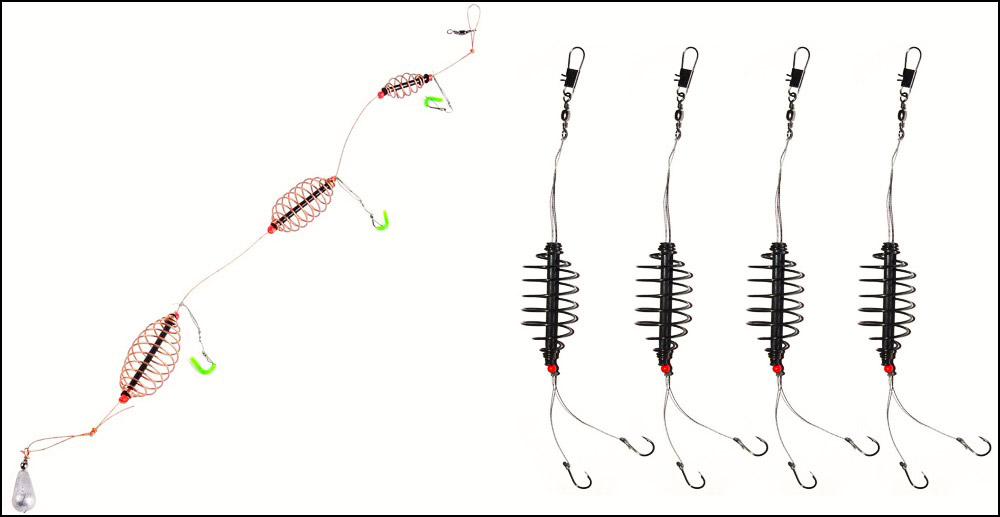
🎡 The first thing to do is to fill the feeder. How to do it?
- Place the bottom of the feeder into the bait mixture.
- Drown the feeder halfway in the bait.
- Hold the bait with your fingers and tamp it down well with your thumb.
- This creates a dense plug of bait, which will prevent the bait from falling out on casting and in the water column until the bait reaches the bottom. At this stage, if necessary, you can add various additives to the bait such as grouse, caster, moth, chopped worm, corn, pellets, etc.
- Fill the remaining empty part of the feeder with a crumbly mixture.
- Using your thumb, lightly press down the bait.
- This is the ideal way to fill the feeder, so that the bait will not spill out on the cast and in the water, but will “explode” on the bottom.
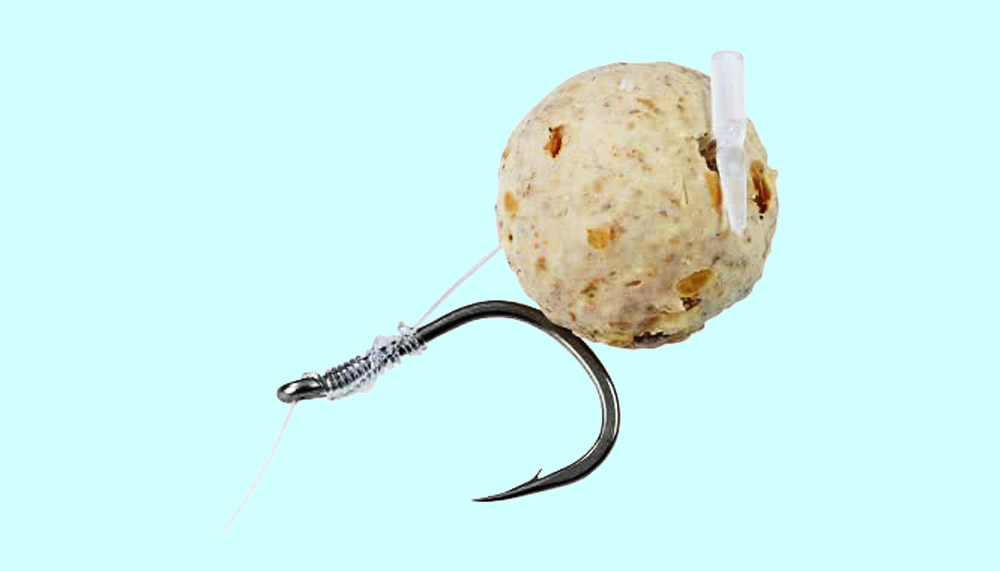
Bait Throwing
It is believed that a feeder, even at long distances, should hit a square meter of area. To cast the feeder correctly, it is necessary to set a certain working length by clipping, and the rod, when bringing the feeder, should always be in the same position so that there is no error in length.
Aiming for azimuth is done visually. To do this, select a stationary landmark on the opposite bank – a tree, a structure, a fold in the bank, etc. When casting, aim at this landmark. For accuracy, during the start position, it is necessary to match the hand on the feeder’s chord with the landmark on the line of sight. With experience this moment is automatic. The constant throwing of the feeder to the same place on the bait point is the main goal, a peculiarity of the tactic.
Bait Signaling
Vertical swings of the rod, its straightening or bending – this is what characterizes a feeder bite. Accordingly, the first thing to look for is a shaking tip of the feeder and a sharp swing. If the movement of the tip is barely noticeable, there is no bite at the moment.
How To Place The Rod On The Stand
A stand for a feeder rod is of great importance when setting up a fishing spot. The rod must be positioned as comfortably as possible to make a timely hook, and with a good stand, this is much easier to do. Most modern products are removable structures, which are fixed to a stand or chair mount with a standard thread. A feeder rod stand is usually made of neoprene in the form of a comb with different spacing and number of cells. There are U-shaped products made of plastic with an adjustable angle of inclination. It is convenient to attach a bell or bells to them so you don’t miss the bait.
If the current is weak or absent, fishing rods are installed parallel to the bank, and if fishing is carried out on a reservoir with a strong current, the top of the feeder rod should be above the rim. Bait indicators and additional holders are mounted on such stands.
Where You Can Fish With A Feeder
Fishing with a feeder is quite exciting and dynamic. When choosing where to feeder fish, make sure the area is not bogged down. The current should not be too strong. Once you have chosen a place to cast, you can start mixing the bait. For the purchased bait to be ready, it must be diluted with water and allowed to stand for about 20 minutes. Pour water into the tank with bait in small portions.
The bait made with your own hands can be used immediately. After attaching the sinker to the tackle, the first casting should be made. Considering the fall time and observing the line, it is possible to determine the depth. By pulling the line it is possible to determine the topography of the bottom, the presence of algae, and various obstacles underwater that make it difficult to pull.
Experienced anglers recommend fishing with feeders in areas with shallow holes and bumps on the bottom surface. It is in these places there is a mass accumulation of fish.
Advanced Feeder Fishing Techniques

Double the Action: Unlocking the Power of Double Feeder Tactics
🦖 Benefits of using two feeders: Double feeder tactics involve using two feeders on the same rig or using two separate rods with different feeder setups. This approach can increase the amount of bait in the water, attract more fish to your fishing area, and help you explore different feeding depths or bait types simultaneously.
🦖 Situations where double feeder tactics are useful: Double feeder tactics can be especially effective in situations where fish are spread out at various depths, or when targeting multiple fish species with different feeding preferences. Additionally, this technique can be beneficial when testing different feeder types or bait combinations to determine which works best in specific water conditions or angling situations.
Adapting to the Elements: Feeder Fishing Across Water Conditions
🐧 Adjusting rigs and tactics for different depths: Adapting your feeder fishing approach to different water depths is essential for successful angling. In shallow water, you may need to use lighter feeders or shorter hook lengths to prevent spooking the fish. In deeper water, you might use heavier feeders or longer hook lengths to reach the bottom and present the bait effectively. Adjusting the length of your leader or using a sliding feeder rig can help you explore various depths to find the optimal feeding zone.
🐧 Adapting to varying current speeds: Current speed is another critical factor that can influence your feeder fishing success. In slow-moving water, you may need to use lighter feeders to ensure your bait doesn’t get carried away too quickly. Conversely, in fast-moving water, you might require heavier feeders or weights to hold your rig in place and prevent it from being swept downstream. Adjusting the release rate of your bait by using different feeder types, such as a cage or block-end feeders, can also help you adapt to varying current speeds and maintain an effective bait presentation.
FAQ: Feeder Fishing Tips: Rigs and Tactics
Conclusion
Feeder Fishing Mastery: Putting Your Rigs and Tactics to the Test
In this article, we have covered various feeder fishing rigs and tactics, including basic feeder rigs, method feeder rigs, helicopter rigs, and inline feeder rigs. We’ve also discussed different techniques for bait selection and preparation, casting and feeder placement, strike detection, and hook-setting, as well as playing and landing fish. Lastly, we delved into advanced feeder fishing techniques, such as double feeder tactics and adapting to different water conditions.
Refining Your Feeder Fishing Approach for Maximum Results
Feeder fishing is a dynamic and rewarding angling method that offers endless opportunities for experimentation and refinement. We encourage you to try different rigs, bait types, and tactics to find what works best for your specific fishing situations and target species. Don’t be afraid to make adjustments based on your observations and experiences, as this is the key to developing your skills and becoming a more proficient feeder angler.
Wishing You Tight Lines and Bountiful Feeder Fishing Adventures
We hope this article has provided you with valuable insights and guidance for your feeder fishing adventures. By applying the knowledge and techniques shared in this guide, you’ll be well-equipped to enjoy a fulfilling and successful feeder fishing experience. Tight lines, and may your catches be plentiful!
A fairly popular form of fishing today is considered to be feeder fishing, which allows you to catch fish at different depths and distances from the shoreline. The process of fishing with a feeder is interesting enough that not only an experienced fisherman but also a beginner in the field of fishing can master. I hope my article has helped you to answer the question – How to fish with a feeder correctly.
Tags: #how to fish with a feeder / #how do you fish feeder method / #what do you put in feeder fishing / #what is a feeder fishing rod / #what is feeder fishing / #feeder fishing tips / #feeder fishing rigs / #feeder fishing equipment

I live in Tenerife (Canary Islands) for the last 10+ years and share my daily fishing experiences on my website. Many years of personal experience as a fisherman and the vast experience of my friends allow me to write professionally on any fishing topics (from choosing a flashlight and equipment to deep-sea fishing).
All of my advice is based on practical real-world experience and will be useful to both novice anglers and professionals. Read more about the author.
Affiliate Disclosure: FishReeler.org sometimes gets paid for listings, through sponsors or affiliate programs like Amazon, Ebay, Cabelas, Bass Pro Shop, Shimano, Daiwa, Rapala, Renn, Okuma, KastKing, etс. Clicking a link helps keep FishReeler.org free, at no extra cost to you!
About the author: Each article is verified by the fishing expert Sergio Smirnoff. The articles are written by professional and amateur fishermen with 20+ years of fishing experience.
Note: The views and opinions expressed in this article are those of the authors and do not necessarily reflect the official policy or position of any agency. The articles are for informational purposes only, share your opinions in the comments and join the fishing discussions, let's share our fishing experiences together!


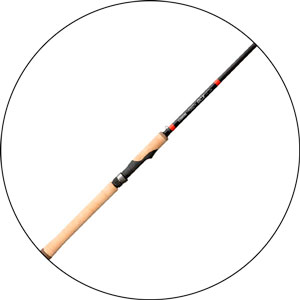
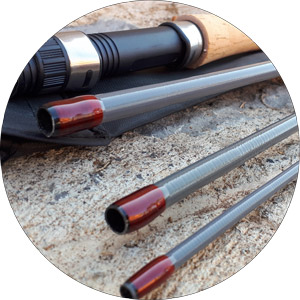
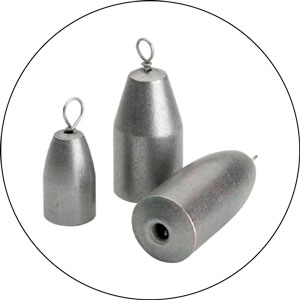
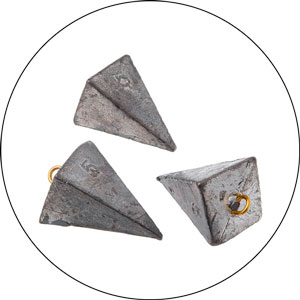
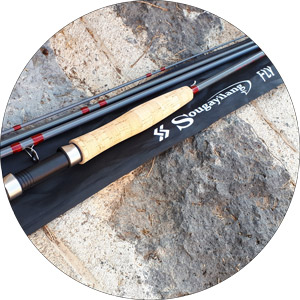
It is also possible to make a feeder for fish quickly by yourself from the neck of a plastic bottle. Instead of the lid, attach a sinker weighing 60 grams or more. Inside the container put food (you can special bait from the store), hooks tie on short leashes and place inside the feeder.
Easier throwing with such a device (feed does not fall out), feeder falls to the bottom on a strictly vertical (not turned over), hooks do not fall out, soaked fodder is not washed away, no need for partitions, holding the bait. The fish sees a large container of food and begins to greedily grab, swallowing the hook. Proven by personal experience.
Took your advice on making bait. I took soft bread for making toast, the stinkiest and cheapest grated cheese, and special smelling oil with sardine blood, and sugar. This mixture adheres well, and in water becomes a liquid mass, which the fish eagerly eat. Thank you for the information.
This article is a fantastic resource for both beginners and seasoned anglers alike. The breakdown of different feeder rigs and tactics has given me new ideas to try on my next fishing trip. Thanks for sharing this comprehensive guide!
I just started getting into feeder fishing, and this article has been incredibly helpful. The tips on bait selection and adapting to different water conditions have already improved my fishing results. Keep up the great work!
As someone who’s been feeder fishing for years, I appreciate the depth of information in this article. The section on advanced techniques was particularly interesting, and I’ll definitely be giving the double-feeder tactics a try. Thanks for the useful tips!
I’ve always struggled with casting and feeder placement, but the tips in this article have made a noticeable difference in my accuracy. The explanations of different feeder rigs were easy to understand, and I feel more confident in my fishing abilities now. Great job on this article!
Wow, this guide is a goldmine of information! The strike detection and hook-setting tips have helped me land more fish on my recent outings. I’m excited to try out some of the other techniques shared in this article. Thanks for putting together such a thorough and informative guide on feeder fishing!